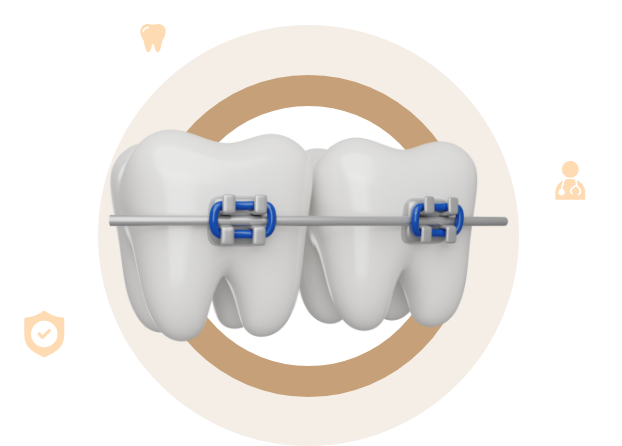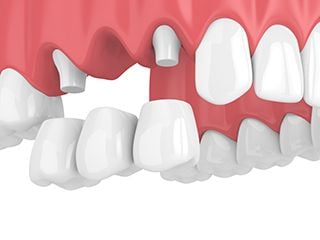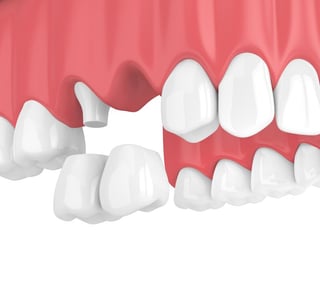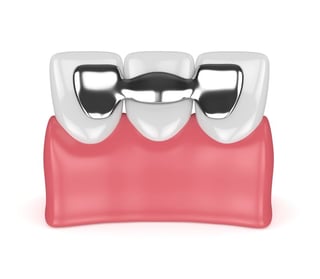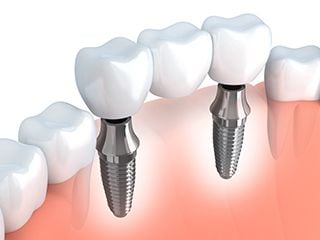When you lose a tooth, it affects not just the appearance, but the function of your smile.
- It can be difficult to eat or speak naturally
- Extra stress is put on your remaining teeth
- You’re at greater risk for developing gum disease
- Your remaining teeth can shift out of position, causing bite problems
- The shape of your face and jaw can change over time
A bridge is a restoration that will help you maintain your oral health while making your smile complete again.
Bridges use prosthetic teeth to “bridge” the gaps caused by missing teeth. These false teeth are known as pontics, and are crafted from metal, porcelain, or porcelain fused to metal. Pontics can be matched in size, shape, and color to the teeth they are replacing for a natural appearance. A bridge can replace up to four teeth but is typically used to replace one or two.
There are four common types of bridges and the type of bridge that is best for you will depend on your preferences, your oral health, the location and number of missing teeth, cost, and other factors. Because a bridge requires healthy teeth, gums, and bones for long-lasting and successful restoration, any dental problems will need to be treated beforehand.

